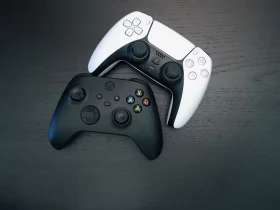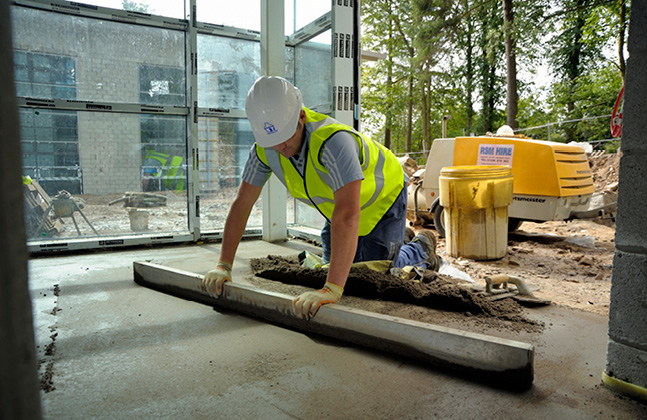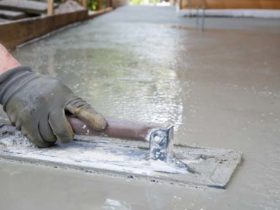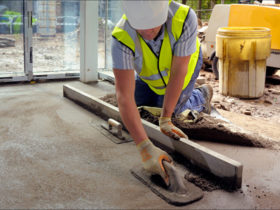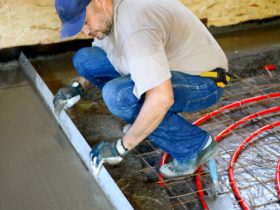Assuming you’re embracing a construction project, having the right kind and measure of materials is vital assuming you will keep away from misfortunes that can defer the fulfillment of the work. Concrete is inseparable from construction, however screed is less notable outside of the business, yet in any case, it tends to be a vital part of a form. In this piece, the Total Concrete group will take a gander at what precisely screed is and the way that it tends to be helpful for you.
What’s going on here?
A floor Screed is a dainty layer of material that is put on top of a concrete subfloor. Ordinarily, screed consists of cement and sharp sand, yet where a more modern rendition is required, coarse totals can be added to make a thicker layer. The layer of screed is frequently covered with an enlivening completion, however sometimes, for example, in stockrooms, it is left exposed to proceed as the actual completion. This is regularly done in conditions where scrapes and stamps are not out of the ordinary, yet it tends to be utilized as a sleek flooring decision also – the fake modern look is a well-known one.
Screed is an incredibly valuable material, it assists with accomplishing level surfaces, and covers underfloor warming. Notwithstanding, there are so many various sorts of screed it tends to be a piece befuddling. This is an outline of the various kinds of screed to can get.
What Are The Different Types Of Screed?
There are three fundamental sorts of screed, and their use relies upon the kind of base being utilized for the application. The three sorts are:
- Reinforced – this can be applied straightforwardly to the concrete base. As the name recommends, it is ‘clung’ to the base utilizing a holding specialist. This is a typical strategy for conditions where weighty burdens are normal and where there is no space for utilization of unbonded screed.
- Unbonded – this can be laid on top of a moist verification film. Unbonded screed is essentially 50mm thick, and the reality it isn’t clung to the fundamental construction implies that settlement and shrinkage hazards are decreased.
- Drifting – utilized as a layer of protection material. This kind of screed is most normal where underfloor warming is available, and the thickness of drifting screed is around 65mm and 75mm, for daintily and vigorously stacked floors individually. In the event that utilizing a calcium sulfate screed, 35mm profundity will be adequate for homegrown use, and 40mm important for business applications
Conventional Screed
Conventional screed contains sand, cement, and water, this is the most famous choice. Nonetheless, the drying system can’t be surged, requiring as long as five days to dry before it very well may be strolled on once more. Rules additionally say that you shouldn’t matter in excess of 120 square meters of customary screed in one day assuming you have a lot of regions to cover, this could take some time.
Anhydrite Flowing Screed
Anhydrite screed turning into an undeniably famous choice. This screed can be applied rapidly and can be strolled on inside 24-48 hours. Not at all like conventional screeds, this can be applied meagerly while additionally being very break safe.
Fast Hardening Screed
Fast solidifying screed does precisely how it says it treats, dries very rapidly. Rather than holding up days to stroll on your new surface, this kind of screed permits you to stroll on it in only hours. This assists with accelerating projects since you can then lay flooring on top following 24 hours, which is a great deal speedier than some other choices.
Self Leveling Screed
Assuming you are hoping to apply to the floor like vinyl or rug that require entirely level surfaces, then, at that point, this is the right screed to make it happen. This screed guarantees a completely level surface that you can stroll up in 12-72 hours which is one of the quicker choices.
Fluid Screed
The fluid screed will dry much quicker than conventional screed permitting you to stroll on it in around 24-48 hours. It is likewise ready to pour on a lot bigger surface region each day, up to 2,000 square meters each day. This kind of screed is extraordinary assuming you are searching for something that can be completely finished with rapidly.
What Is The Difference Between Screed And Concrete?
The distinction between concrete and screed lies in their capacity: concrete is utilized for strength, while screed is utilized to complete floors as a top layer. They’re both produced using a mix of totals, cement, and water, yet concrete has a coarser consistency, with screeds involving fine totals to help its appearance as a completing layer.
Screed is a significant piece of any construction project that requires a floor to be laid. Picking the right kind can be vital to the accomplishment of your undertaking – from the protection properties of drifting screed to the space-saving nature of reinforced screed, everyone offers its own advantages. Visit PlafixX Factory Oman for more about floor screeds



